Experience The Spirituality In The Valleys Of Himachal Pradesh At The Khajji Nag Temple
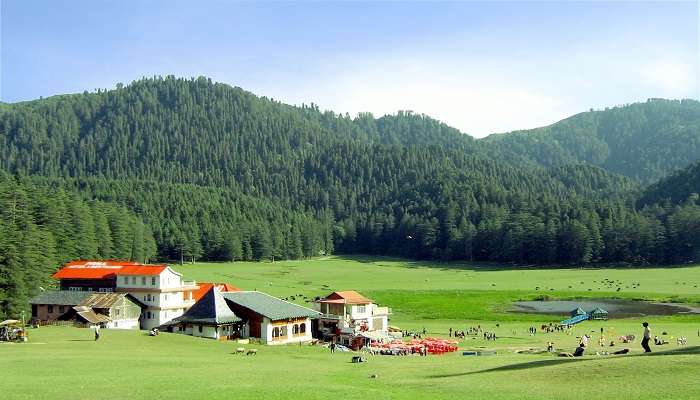
With a history dating back to the 12th century AD, The Khajji Nag Temple is worth adding to your travel list. It is an ancient shrine devoted to the Nag Devta, the King of Serpents, where you will find numerous snake idols. The shrine showcases the diverse architectural style of ancient India, and a gigantic lake beside it makes it a great destination for your next visit. Also, discover the hidden tales about the Pandavas’ visit to this temple.
Visit The Khajji Nag Temple
You might’ve got it wrong if you thought the Khajji Nag Temple was all about spirituality and serpents. The Khajji Nag Temple has more to offer than its visual beauty. Here is a curated list of the other attractions at the Khajji Nag Temple.
History And Ancient Tales
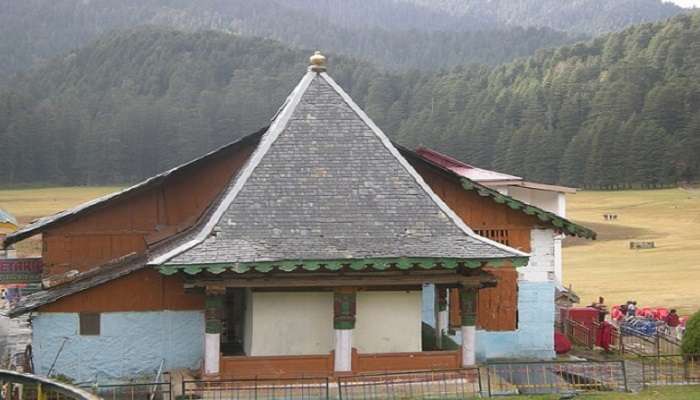
Constructed by King Prithvi Singh of Chamba, the Khajji Nag Temple’s history dates back to the Mahabharata. The temple has beautiful wooden carvings of the serpent God and a huge Shiva sculpture measuring 25.9 meters, which is said to be the largest idol statue in Himachal Pradesh.
There are stories of the Pandavas visiting this temple during their exile period. The sculptures of the Pandavas and the golden dome of the Golden Devi Temple are some of the temple’s attractions. The other two temples inside the premises are The Hidimba Devi and Shivji.
Must Read: Things To Do In Khajjiar
The Khajjar Lake
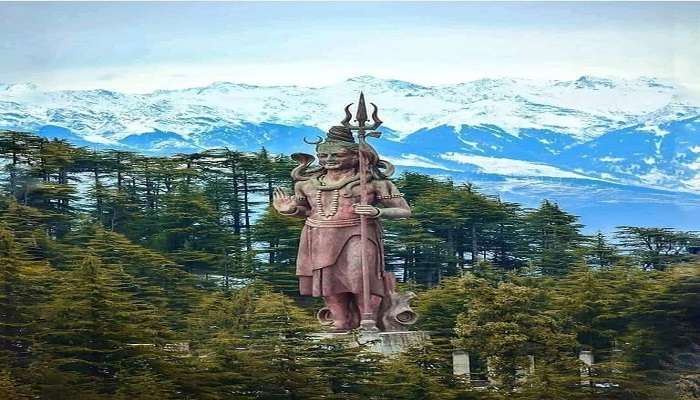
The Khajji Nag Temple is located near the Khajjar Lake in Khajjar, Himachal Pradesh, at an elevation of 1,900 meters above sea level.
The lake itself has a great history of its own. The history is more about tradition and cultural hearsay passed down through the generations of the local villagers than anything else. There is an ancient myth popular in the region that the footsteps of Bheema moulded the lake. Also, it is believed that the Khajji Nag Devta resides in this lake, protecting the scenic village of Khajjar from all sorts of bad omens and natural calamities. Many ancient traditions, beliefs, and customs are associated with this special lake.
Set in a large, lush green landscape with evergreen cedar trees surrounding it from all sides, the lake glistens with watery mists in the early morning. However, with due time, the lake has considerably deflated, and now it is almost on the verge of extinction.
Activities To Enjoy At The Khajjar Lake Near Khajji Nag
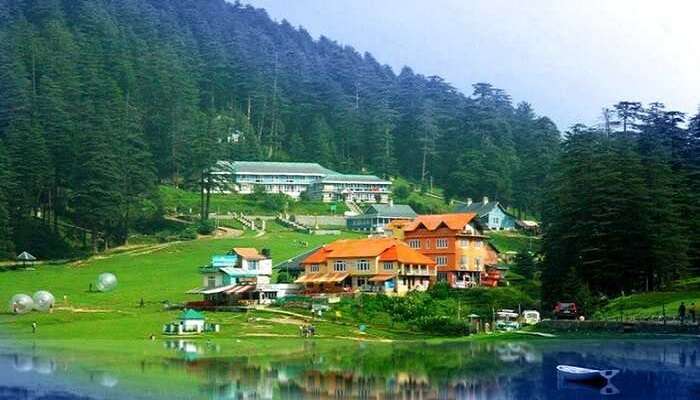
The Khajjar Lake, located in the misty and snowy valleys of Himachal Pradesh, has presented itself as the Mini Switzerland of India. Being one of the most famous tourist spots in Khajjar, the place lets you enjoy activities like paragliding, horseback riding, boating, trekking, etc., making it a perfect spot for families and children.
You can also try an unusual activity like zorbing at the Khajjar sanctuary. The floating island is also a great attraction at Khajjar Lake. You can also enjoy the sight of plenty of fish in the lake. The Khajjar Lake is also a great romantic spot for your honeymoon, where you can get lost in the chilly meadows of the valley.
Some other activities, such as buying souvenirs, zorbing, golfing, and shopping, are offered on the spot. While at Khajjar Lake, you should visit the rock garden and the green valleys.
Suggested Read: Places To Visit In Khajjiar
Timings and Location

Located within a two-hour journey from Dalhousie, the Khajji Nag Temple is set near the Khajjar Lake in Khajjar, Himachal Pradesh. The finest time to visit the place is when the meadows are covered in white layers of snow, i.e., from October to March. But if you want to enjoy other sporting activities, the best time to visit the place is from the end of March to July. To get the blessing of the Khajji Nag Devta, the temple visiting hours are from 6 am to 8 pm. There isn’t generally a long waiting time, but you can wait up to 10 minutes for entry.
Estimated Budget For Your Visit
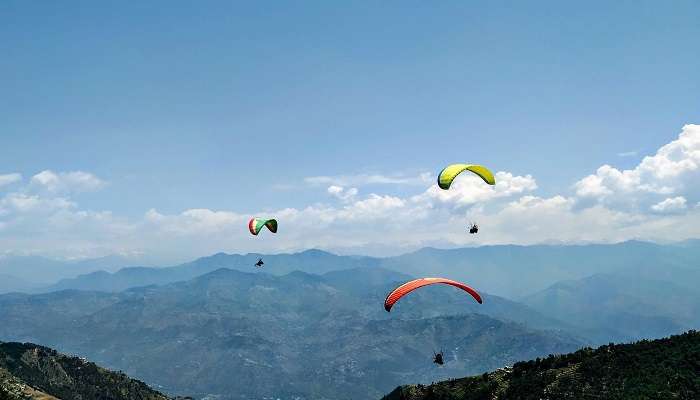
The Khajji Nag Temple, located within a two-hour drive from Dalhousie, has a budget expense of 10,000 INR to 15,000 INR, depending on your stay. It is advised that you stay at Dalhousie rather than Khajjar, as Dalhousie has a great range of lodges and hotels at a comparably low price. The hotels there have an estimated cost of between 2500 INR and 5000 INR.
The paragliding charges at Khajjar range from 2000 INR to 4000 INR, which is very high compared to the other spots, so make sure you make a great bargain for the price. Another popular fun activity in Khajjar is zorbing, which costs around 300 INR.
Suggested Read: Hotels Near Khajjiar
Other Attractions Near Khajji Nag Temple, Khajjar
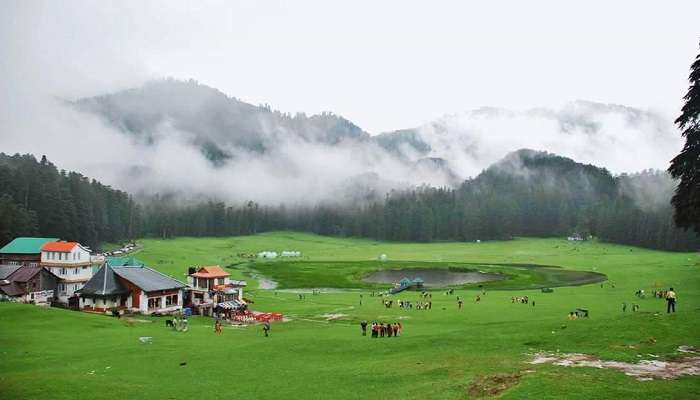
Khajjar has many other attractions besides the Khajji Nag Temple. The Kalatop Khajjar Sanctuary is one of the most famous attractions. Surrounded by lush green Deodar trees, coniferous forests, and fir forests, the sanctuary is rich in flora and fauna.
- Trekking – The sanctuary offers trekking, hiking, and jungle safaris to observe wildlife and diverse flora. Visitors can also enjoy activities like zip-lining and bridge crossings. The sanctuary is famous for preserving Himalayan species of birds and animals, and the best time to visit is during the summer, between March and May.
- Witness The Dainkund Peak – Another attraction in Khajjar is Dainkund Peak, which is the highest peak in the city. On a clear, sunny day without clouds, Dainkund Peak offers a stunning view of the Kailash Parvat. Additionally, Dainkund Peak offers trekking activities for visitors, with the opportunity to visit a small Kali temple while trekking.
- Pancha Pandavas Tree – Among the various special attractions in Khajjar, the Pancha Pandavas Tree is unique. It is one of the popular tourist spots in Khajjar and represents the journey of the Pancha Pandavas and their wife, Draupadi, in Khajjar. Due to its link to the Mahabharata, it attracts a great number of tourists.
Further Read: Khajjiar In December
Now that you have a curated list of all you need to know about the Khajji Nag Temple make sure you plan your trip to Himachal Pradesh to enjoy these fabulous places for an experience worth remembering. Don’t wait and book your tickets now for a pleasant surprise!
For our editorial codes of conduct and copyright disclaimer, please click here.
Cover Image credit: By SriniG for Wikipedia.
Frequently Asked Questions About Khajji Nag Temple
How many days is enough to enjoy Khajjar?
You will need about 3 to 5 days to enjoy the whole Khajjar, including Dalhousie.
What is the best time to experience snowfall in Khajjar?
You can visit Khajjar during the winter to enjoy the snowfall.
What are the main specialities of Khajjar?
The valleys of Khajjar are covered with lush green meadows of deciduous and deodar forests.
Why is Khajjar called the Mini Swiss?
Due to the lush green meadows and snow-covered valleys, Khajjar has a prominent similarity to Switzerland.
Why is the place named Khajjar?
The village of Khajjar has a Khajji Nag Temple, from which the name Khajjar comes.
People Also Read:
Best Spots in Himachal Pradesh Places to Visit in Khajjar Dalhousie Tour Guide

Experience the world through captivating stories of adventure and travel. As a senior content writer, I bring my passion for exploration to life, crafting tales that take you on a journey. With my words, you’ll feel the thrill of discovery and the joy of experiencing new cultures. Let me turn your imagination into a reality with stories that inspire you to explore and embrace the world.











